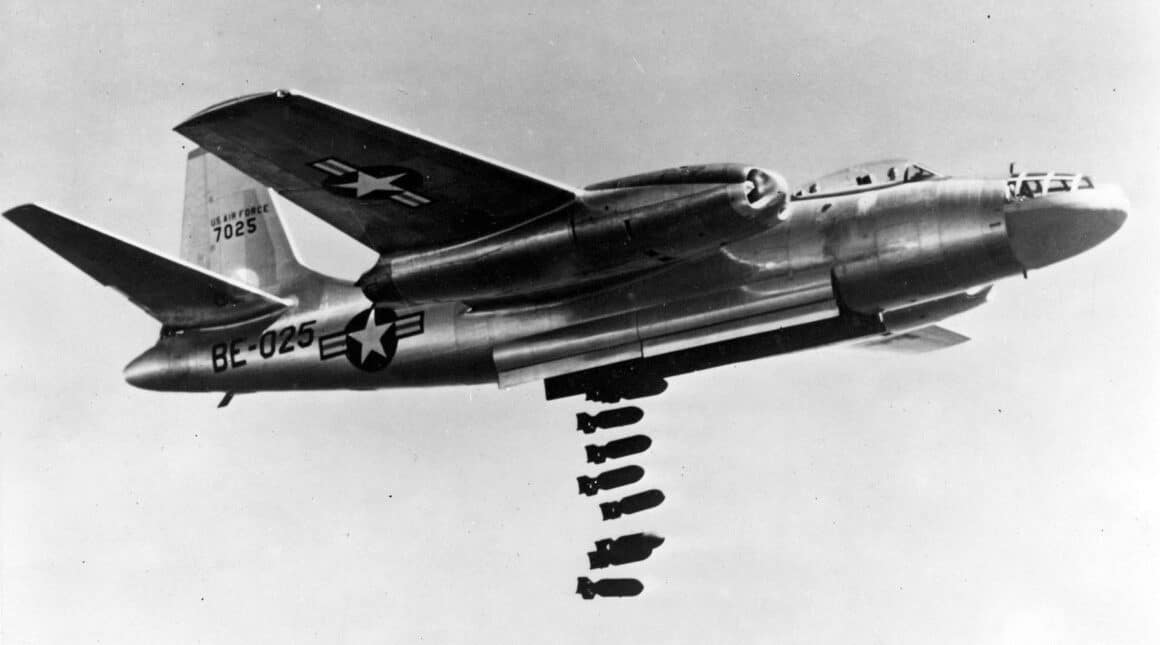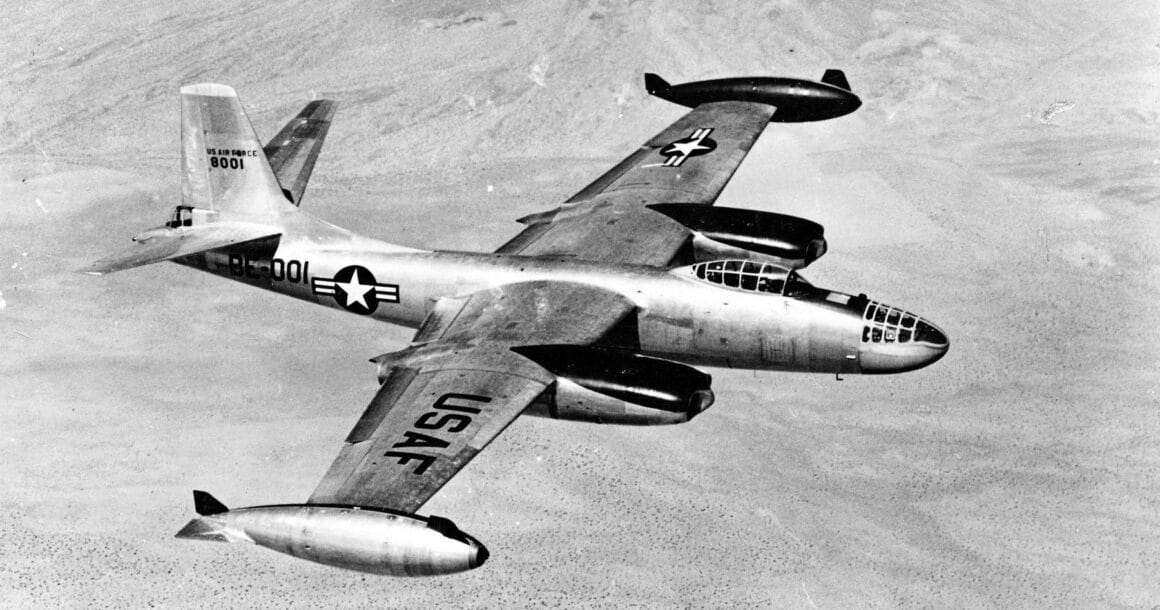Field Fixes and Better Bombers
Incremental improvements continued as production of the B-45A continued. An E-4 automatic pilot, the AN/APQ-24 bombing/navigation radar system, the AN/APT-5 electronic countermeasures system, and an A-1 fire control system were added. Communications equipment, emergency flight controls, and instrumentation for both pilot and copilot were improved. An improved cockpit for the tail gunner was added in the tail for aiming the pair of tail-mounted .50 caliber machine guns with their 1,200 rounds of ammunition. In March of 1950 the 96th and last B-45A was delivered to the Air Force.

To War in Korea
Even though the B-45As in service experienced more than their share of gremlins, when the Korean War started in 1950 the B-45A was still the only jet-powered bomber in service. Consequently both the B-45A and the photo-reconnaissance RB-45C variant were pressed into service in the Far East. But it soon became obvious that because the B-45A (and the few B-45Cs) could deliver both conventional and the newer (and smaller) atomic munitions, they became an important, if small, nuclear deterrent.

The Ultimate Tornado?
The B-45C had 1,200 gallon wingtip tanks, an inflight refueling receptacle, and a strengthened canopy. First flown on 3 May 1949, the C variant was the first multi-jet-powered bomber in the world to be refueled in midair. Only ten B-45Cs were built, and the remaining 33 under construction were converted into RB-45Cs.

Doomsday Deterrent
Nuclear-capable B-45As began arriving in the United Kingdom in May of 1952, taking about a month to complete the deployment of 40 doomsday jets under the code name Operation Backbreaker. Eventually all of the B-45As involved were modified with revised bomb bays to accommodate the nukes, improved defensive systems, and increased fuel capacity thanks to a 1,200 gallon auxiliary fuel tank mounted in the aft bomb bay. Four B-45A squadrons served in Europe as Strategic Air Command’ (SAC’s) first line of deterrence during the early 1950s.

Getting the Picture
The last production variant of the B-45 was the RB-45C photo reconnaissance platform. RB-45Cs carried either up to 12 cameras mounted in up to four positions, or a single camera with a 100-inch focal length lens. Equipped with a water injection system for its J47 engines, RB-45C’s could carry either a pair of 214 gallon external water tanks or two Rocket Assisted Takeoff (RATO) rockets.
First flown in April of 1950, the 38 RB-45Cs built were delivered between June of 1950 and October of 1951. The RAF Special Duties Unit flew RB-45Cs (clandestinely) over the Soviet Union out of RAF Sculthorpe beginning on 17 April 1952 under the code name Operation Jiu-Jitsu. By mid-1959 there was only one RB-45C left in service.

